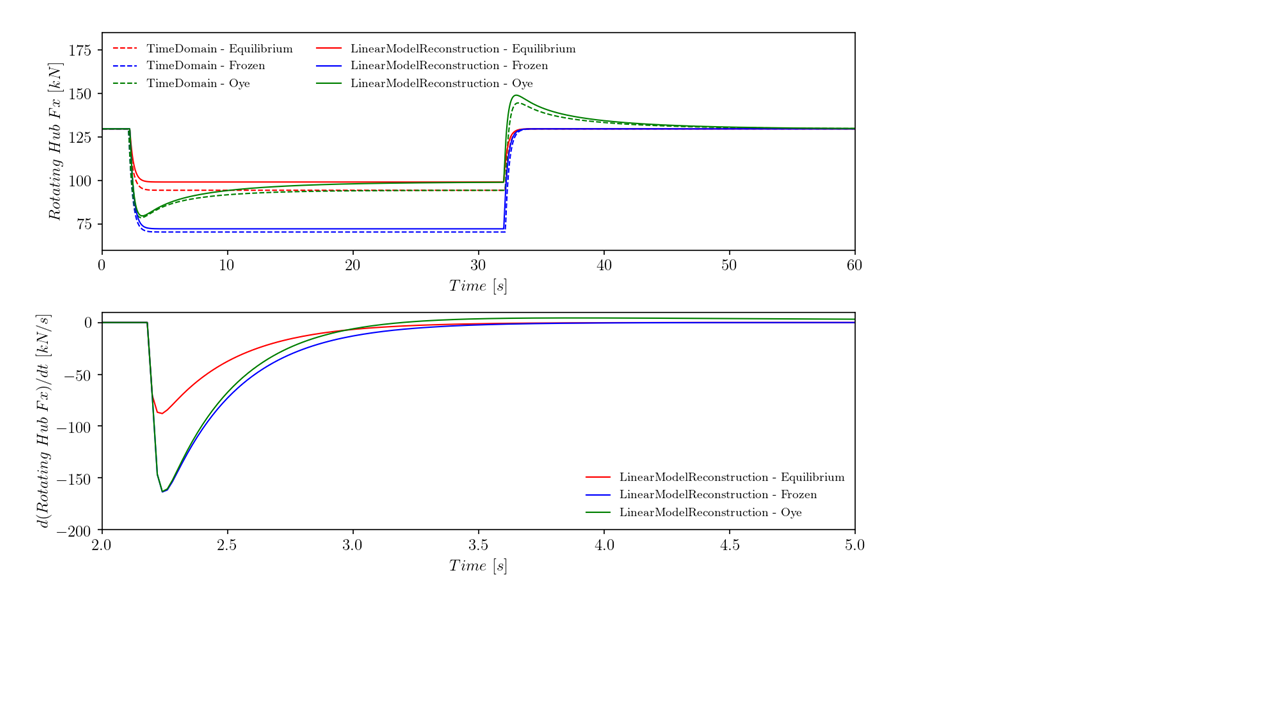In Bladed, users have a full flexibility to include one of the available dynamic wake (dynamic inflow) models in the calculations. This article shows the effects of the wake modelling choice, with particular foces on linearisation.
Bladed versions affected: all Bladed versions
Date of last article update: 21 February 2023
Introduction to wake models
Equilibrium wake: this model instantaneously updates the induction in response to changes operating condition. This represents the steady state solution. It should not be used in linearisation as it would represent an instantaneous response of the wake, where in reality the response is significantly lagged. It is also not a good approach for time domain as the lagged wake response is not captured. This model can be used only to check the steady state (quasi-steady) response.
Frozen wake: this model keeps the induction velocity from the initial conditions, and doesn’t change the induction either during linearisation perturbations or in the time domain. In linearisation this lack of response can be a good approximation to the lagged dynamic wake response. The frozen wake approach is not appropriate in the time domain.
Oye wake: this dynamic wake model captures the lag in induction in response to a change of inflow conditions. It is the most accurate model for linearisation and time domain, but it does increase linearisation time significantly as it introduces extra states.
Free flow wake: this option means that there is no induction and so no momentum calculation. The lift, drag and moment polars are used directly. This can be appropriate to use in e.g. parked / idling.
Comparison of time domain responses
See the plots below showing the response to a pitch change in time domain using different wake models. Results from time domain simulations are shown alongside linear model results re-created in the time domain.
Frozen wake model predicts the initial response to pitch change and overshoot well, but it will not generate the correct quasi-steady state. Equilibrium wake model predicts the quasi-steady level correctly but does not capture the initial response or overshoot accurately. Oye model predicts both the overshoot and the quasi-steady solutions accurately, but it may take longer to run (particularly during linearisation) because more states need to be included.

Summary: When to use each dynamic wake model setting
----------------------------------------------------------------------------------------
Use case of dynamic wake model
----------------------------------------------------------------------------------------
Oye | Equilibrium | Frozen
----------------------------------------------------------------------------------------
Time Domain/Linearization | Quasi-Steady Calc | Linearization
----------------------------------------------------------------------------------------